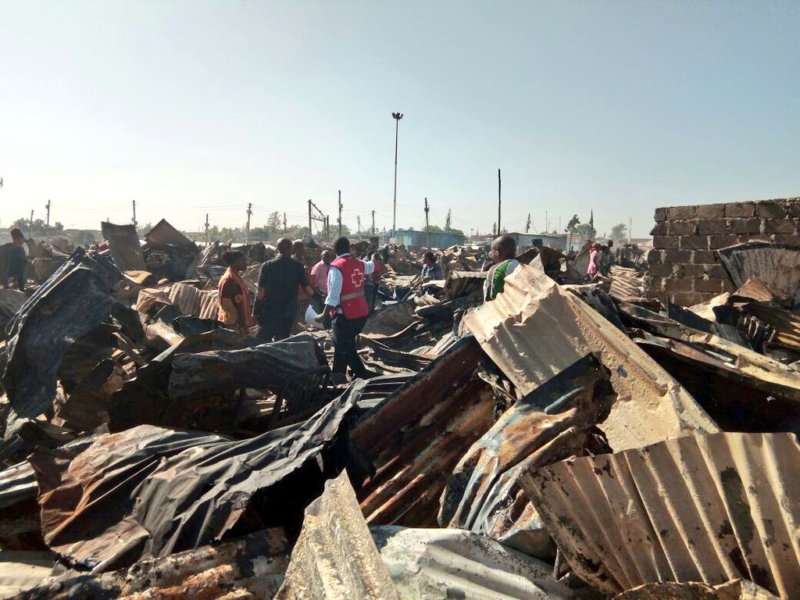Our team carrying out an assessment following last night's fire incident near Southlands in Langata. We are also offering first aid and psychosocial support services. pic.twitter.com/8kH43ar9PQ
— Kenya Red Cross (@KenyaRedCross) January 29, 2018
Five killed and thousands displaced after fire rips through Kijiji slum in Nairobi
From January through March of 2011, fires swept through three slums in Nairobi, Kenya, displacing nearly 25,000 people. First responders were slow to respond and residents reported that a lack of government presence allowed a fuel spill to continue for hours. The fuel eventually ignited, sending a ball of fire through the crowded streets.
Less than 10 years later, fires still continue to plague Nairobi’s poorest and most densely packed areas.
On January 28, 2018, a fire engulfed the entirety of the Kijiji slum in the Lang’ata neighborhood of Nairobi, near the Southlands estate. The blaze resulted in the death of five people. Due to the informality of the settlement, estimates of the number of displaced people vary, but CNN approximates the total to be around 6,000. The governor of Nairobi, Mike Sonko, called for a full investigation of the fire, accompanied by a tweet that claimed that “those found guilty will face the full force of the law.”
The cause of the fire has yet to be determined. and efforts to control the blaze have been highly criticized. Firefighters reportedly arrived within minutes, but according to the Kenya Red Cross, it took eight hours to contain the fire. This was due to a number of compounding factors, including a lack of access roads throughout the slum, and an insufficient amount of water.
“There was firefighting equipment there but unfortunately they didn’t have water,” Nixon Korir, a member of parliament for the area told KTN News.
Residents resorted to using sewage water to save their engulfed homes. The water deficiency has since been blamed on faulty fire hydrants and water rationing.
”It was like fighting in hell, it was like hell,” Resident Maryam Mohamed told the BBC.

By February 5, the thousands left homeless by the fire were still taking refuge at Ngei Primary School. The government has pledged $490,000 to help the victims of the fire, however lack of resources plague the recovery efforts. Food is already scarce, especially for those with large families, and resettlement issues have arisen. Although government plans enable the construction of more access roads to and from the slum, they have done so at the cost of constructing less houses than were burned down.
Additionally, projects to rebuild may not quell the anger over the reported failings of the response or address the underlying problems that allowed the blaze to spread so rapidly. According to local media reports, this was not the first incident in which fire engines ran out of water.
Last year, the President of Kenya deployed a new line of fire engines across the country, creating hope for a road to better disaster preparedness, something the country has struggled with for years. Although Nairobi received 24 of the new fire engines, only four arrived to contain the blaze in Kijiji, and all of them lacked sufficient water sources. The army, which usually helps civilians when disasters occur, was not deployed, despite the presence of barracks less than a kilometer from the flames. The government has not provided an explanation for this decision.
Sources and further reading:
Slum fires highlight urban preparedness gap – IRIN
Pipeline fire kills dozens in Nairobi slum – The Guardian
Fifth body pulled out of Lang’ata slum fire debris – The Star
Four dead in Kenya blaze as fire trucks “run out of water” – CNN
Lang’ata fire: ‘Not enough water’ to tackle Kenya blaze – BBC News
New houses for Kijiji slum fire victims, but who will own them? – The Standard
